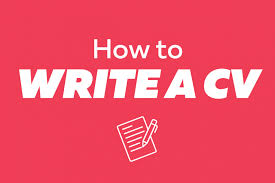How to Write A CV Curriculum Vitae to Win a Job

posted:4 years agobyMarry JoJoin CVs
Did you send multiple job application? Not got any call-back? Probably, it’s time to know how to write a CV which let you win a job. A significant reason for not getting an interview call is your old-style and designed CV format.
Every job applicant must know that he is not the only kind fit for a job; there are many others. According to a report, a candidate might have to be completed with 250 other candidates for a single post.
Yes, you read it right. There are so many in the queue. So, how to stand out from the crowd. The simple answer is to write a CV in a proper manner, style and format.
Follow 8 Steps and Write a CV
The easiest method to create a CV is to download a CV template and then replace the demo content with your information. But it won’t let you win your dream job. Put a little effort on the CV writing task, and this investment will bring fruitful ROI in the long run. Here are the necessary steps.
Step No.1 Pick a CV format
One thing I need to clear is that CV and Resume are two names of the same document. American use word resume during British use word CV. So, don’t get confused. There are four different types of Resume formats. You need to select a size that matches to your job requirements.
A standard CV format includes the following headings:
-
CV header with Personal details
-
Career Objective or Summary
-
Work Experience
-
Education
-
Skills
-
Additional Sections
Step No.2 Add your Details
It includes your name, email address, phone numbers, personal photograph and social profiles. You can skip photo when not explicitly required by the employer. Make sure your social profiles are up-to-date and professional. They must match with your personal information and details you added in the CV; else employer found it hard to trust whatever details you entered into your CV.
Step No.3 Write a Catchy Career Objective
You add your profile into your CV. A career objective describes who you are, what you already did, and what you want to do next. You will write a short 100 words paragraph in which you explain your professional title and work experience.
Make sure you write a professional and exciting summary of you and your work. If you do this, then you will keep your employer engaged.
Read this detailed article: What are Career Objectives on a Resume? It helps you write the best professional summary for your CV.
Step No.4 Work Experience
The second most important section of a CV after Summary is the list of your work experience. It helps employers get an understanding of your expertise and achievement. Make sure you design this section with utmost care.
Important Note: If you are thinking that writing all your past job details in chronological order is what you have to do, then you need to rethink. You won’t be able to get your dream job. So, try to think out the box.
-
When you are going to write a CV, don’t pile up all your work experience details. Filter the best one.
-
Focus on your achievements and best-done jobs.
-
Write about what you did, not what your responsibilities were. In the detail section of your work experience, try to use action-verbs, produced, created, analyzed, implemented, etc.
-
Customize your work experience based on the job description to increase your chances of winning a job.
Are you an employer? Know How to Conduct an Interview in 7 Easy Steps
Step No.5 Education
Keep this section simple. Gone the days when you had to provide details of every single degree. Now you need to showcase details of the highest degree you got.
-
If you are a graduate, then don’t add high-school details. In the same way, post-graduate can focus on post-graduation and skip graduation details.
-
Make sure to summarize the education section in a few lines when you write a CV. If you add all the details, it will capture more space and look dull.
Tip: If you don’t have any work experience, then you can add more educational details.
Education Section Format
-
Graduation year
-
Your degree
-
Institution name
Note: If you are still a student, you can mention the expected date of your graduation.
Mention Skills
When you are going to write a CV, don’t bombard this section with all the skills you have. It is recommended to read the job description, get an idea of what the employer wants and then add relevant skills in your CV. In this way, you can win a job without an interview because your essential skills will be matched with overall requirements.
Step No.6 Include Additional Sections
To make a good impact on your employer, you should add some additional sections on the next page. Here is what you can add.
-
Professional Additional Section includes publications, professional awards, additional training, and certifications.
-
Student Additional Section comprises of academic achievements, hobbies, interest, volunteer experience, internships, etc.
Step no.7 Organize your CV
Convert your CV into PDF format and save it. PDF will keep the overall sections, heading and format intact. Make sure to read what kind of CV format your employer is looking for. Some employers ask for PDF while others like to have in Microsoft word file. Meet their demands.
Step No.8 Write Cover Letter and CV
The last step is to write a professional cover letter and then attach your CV with it. Now just wait for a while, because you are going to get an interview call in upcoming days.
